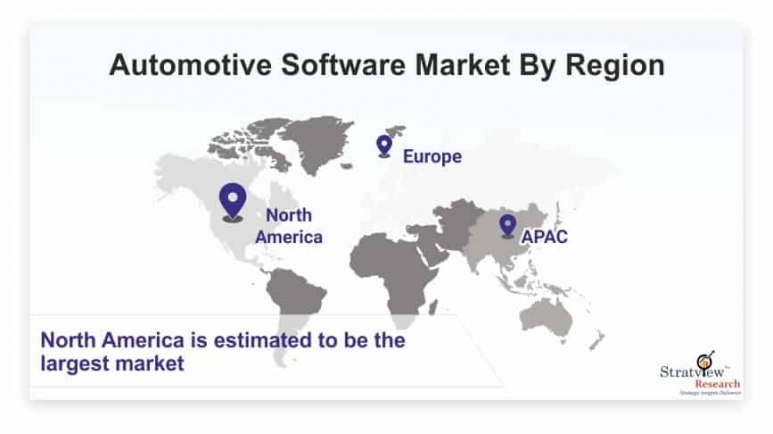What is the future of Automotive Software Market? Know Covid Impact on Size, Share & Forecasts

AUG 06,2021/IndustryNewsGlobal/ The unexpected shifts in the global markets because of the sudden outbreak of the COVID-19 virus have brought many major and minor tremors to industries of all sizes including the Automotive Software Market.
Automotive software market is likely to witness an impressive CAGR of 12.8% during the forecast period. The growing demand for automotive software is mainly due to stringent government regulations focusing on the safety of the vehicle coupled with fast adoption of AI and IoT in vehicles to better assist the drivers, which is likely to drive the market during the forecast period.
Automotive software is a software designed to support and enhance the experience of operating a motor vehicle. New developments and integrations in the automotive technological world are progressively being implemented as the industry realizes the position of data to a vehicle operator.
This report studies the market covering a period of 12 years of trend and forecast. The report provides detailed insights into the market dynamics to enable informed business decision making and growth strategy formulation based on the opportunities present in the market.
Based on the software type, the market is segmented as autonomous driving software, safety & security software, vehicle management software, and infotainment software. The vehicle management software segment held the largest share of the market in 2020, and is expected to remain dominant during the forecast period. This system provides accident tracking, vehicle self-diagnosis, driver fatigue management, and fuel management. All of these systems assist driver by giving information regarding vehicle maintenance and regular checkup.
Based on the application type, the market is segmented as engine management system (EMS), anti-lock braking system (ABS), airbag control, car navigation system, infotainment system, and mobility service. The engine management system segment is expected to remain dominant during the forecast period owing to stringent government regulations in relation to fuel emission. For an instance, the Euro 5 and BS IV regulations states the mandatory usage of electronic engine management system in vehicles, driving the growth of the segment during the forecast period.
In terms of regions, North America is estimated to be the largest market for automotive software during the forecast period, with the USA, Canada and Mexico being the major countries offering lucrative growth opportunities. The growth of the North American region can be attributed to the extensive growth in production of passenger vehicles in the region and the presence of a large number of automotive software manufacturers in countries, such as the USA, Canada and Mexico. Further, the North American automotive software market is mainly driven by favorable government policies. On the other hand, Europe and Asia-Pacific are also expected to offer sizeable growth opportunities over the forecast period.
Key Players:
- Ansys Inc.
- Autodesk, Inc.
- Bosch Software Innovations GmbH
- CDK Global LLC
- Cox Automotive
- Daimler AG
- Dassault Systèmes SE
- DealerTrack Holdings, Inc.
- Delphi Technologies
- Ford Motor Company.
Features of the Report
This report offers high-quality insights and is the outcome of detailed research methodology comprising extensive secondary research, rigorous primary interviews with industry stakeholders and validation and triangulation with Stratview Research’s internal database and statistical tools.
The Automotive Software Market analysis report discusses the following heads in great detail:
- Market structure: Overview, industry life cycle analysis, supply chain analysis
- COVID-19 Impact Assessment
- Market environment analysis: Growth drivers and constraints, Porter’s five forces analysis, SWOT analysis
- Market trend and forecast analysis
- Market segment trend and forecast
- Competitive landscape and dynamics: Market share, product portfolio, product launches, etc.
- Attractive market segments and associated growth opportunities
- Emerging trends
- Strategic growth opportunities for the existing and new players
- Key success factors